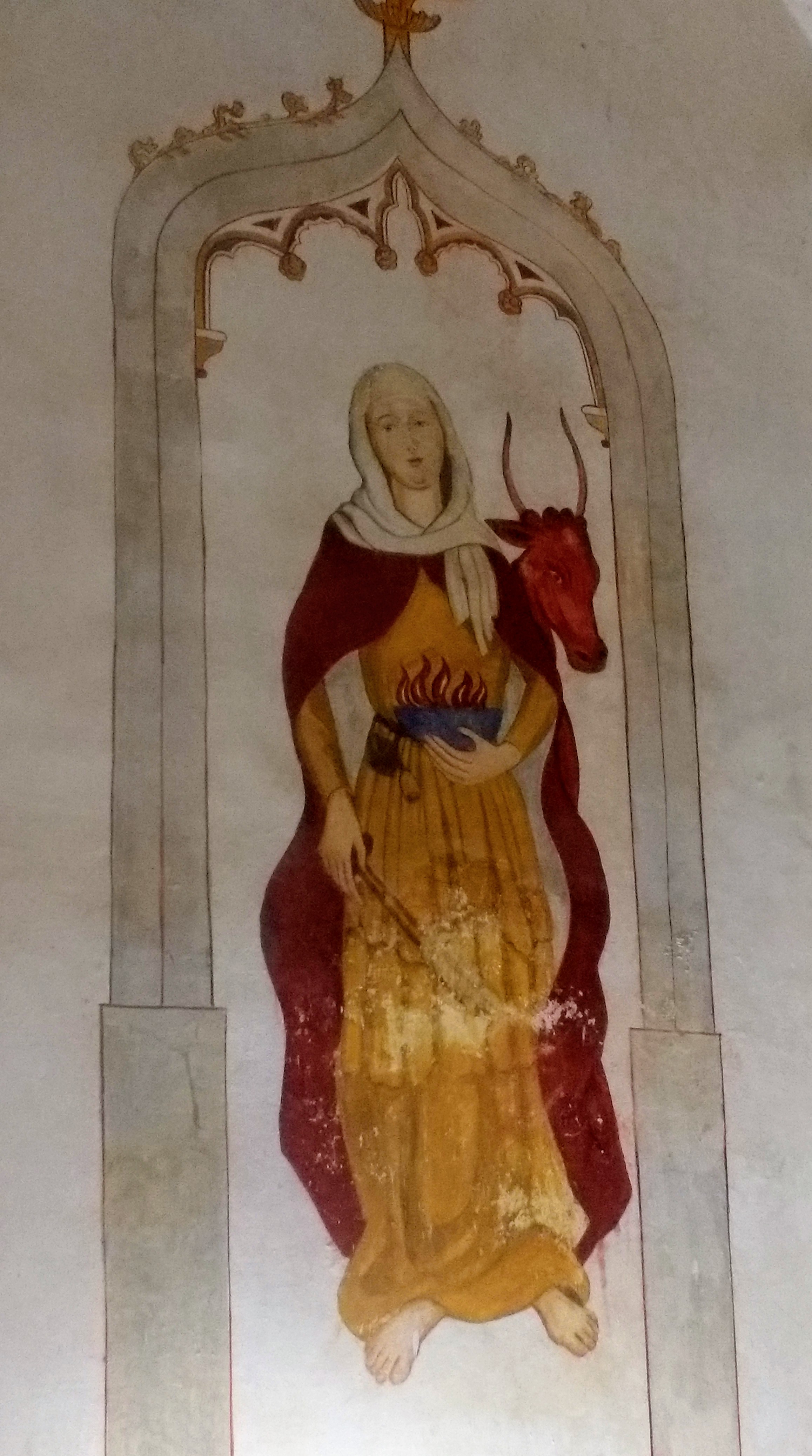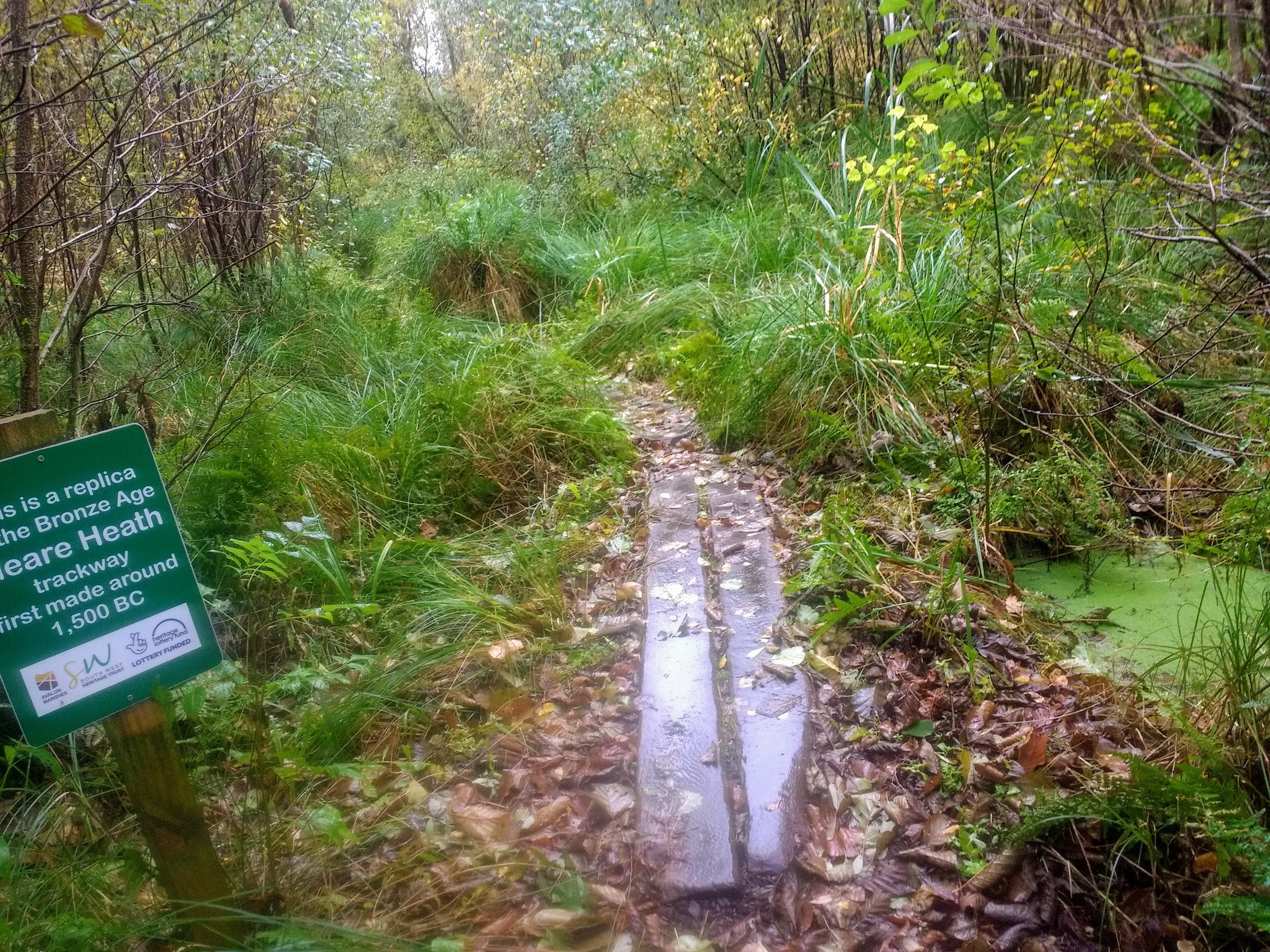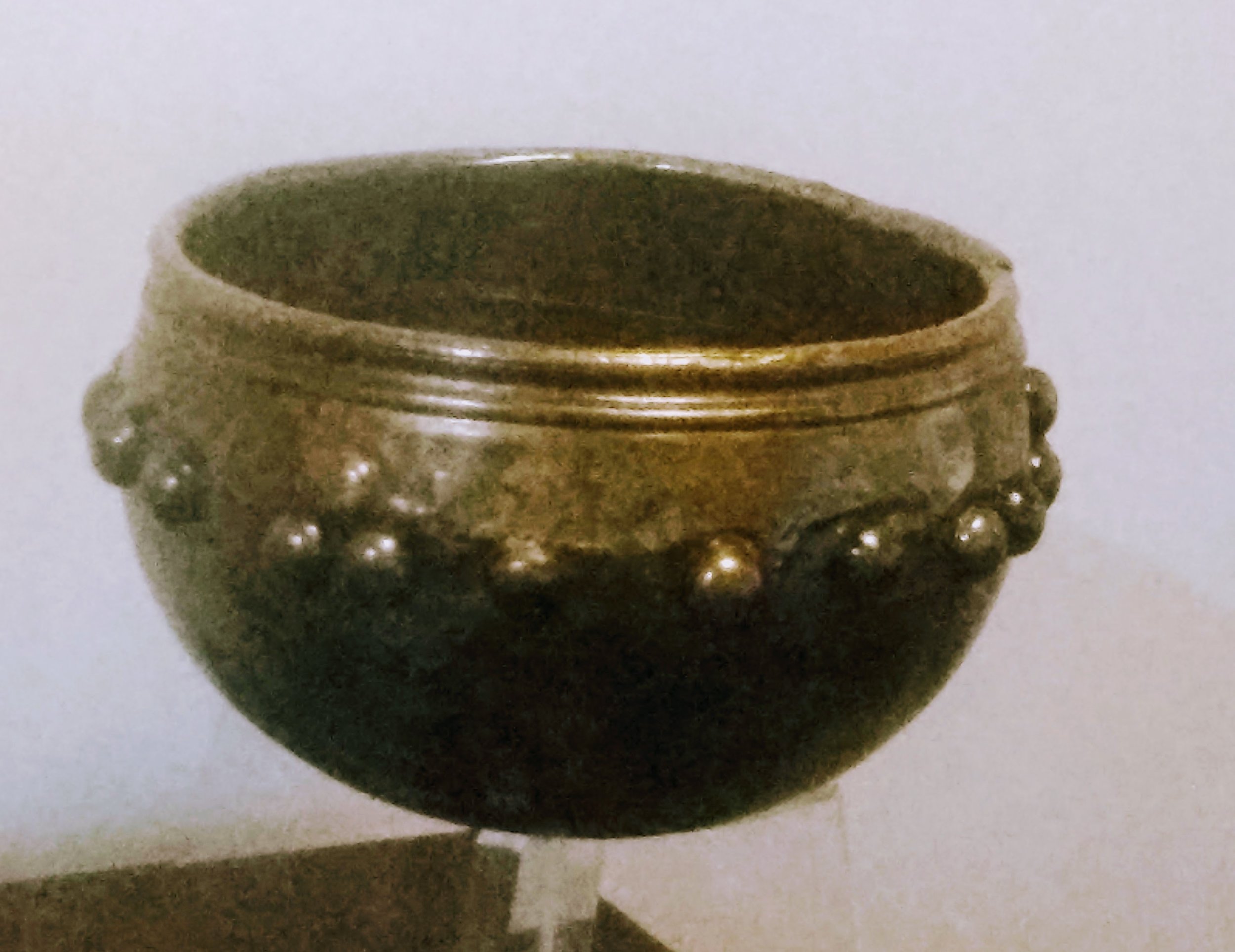The coming of Spring - a sweet track into the heart of Brigid and the Isle of Glass
The snows had come and the ground was as hard as the iron smelted in the village furnace. This was not the time of year for waterborne trading on the River Brue and surrounding wetlands from central Somerset to the Severn Estuary. On the small islands of the Glastonbury Lake Village, a Celtic dawn was breaking in the East above the icy mists that shrouded the frozen rivers and marshes of the Somerset Levels. Ynis Witrin, the ‘Isle of Glass’ was lit by a soft, yellowish white light in the winter sun, as if it was not really wanting to fully wake up on this freezing morning.The villagers were starting to stir in their thatched round houses, to stoke the glowing embers of the central hearth fires, heating the cauldrons cooking on the irons, and fill their bellies with a warm breakfast before they cleaned and prepared for this festival of the coming of Spring. They would be taking out the beautiful bronze bowl, forged in the village by the expert metalworkers, to fill with water from the sacred springs of Ynis Witrin as part of the rituals of the day which included storytelling around the dancing flames of the fire and singing the sweetest of songs.
Further West across the peaty wetlands the Sweet Track of their Bronze Age ancestors lay buried, frozen in the swamp mud along with the God-dolly thrown into the waters at that very same time of year millenia before, to honour the water spirits and prepare for the new life that was just emerging from the depths of winter. The remnants of the wooden trackways linking the islands of Avalon which had been built in just one summer would not reveal their secrets for another 2000 years. Further West still, across the marshes, rivers and lakes of the Somerset Levels, out into the Severn Estuary and over the sea to Ireland, Gaelic Celtic tribes were also stirring in readiness for Imbolc, the feast day of Brigit, adored by poets and dedicated to healing, fertility and the dawn.
The Sweet Track had been built in the spring of 3806 BC, when farming and settled life was just beginning in the Levels, linking the lake village on the island of Meare to the Polden Hills ridge. The first Neolithic farmers of the area had cleared the forest to create grassland for their domesticated animals to graze and to grow arable crops. The islands were important clusters of survival in these boggy wetlands, and the wooden trackways provided a means to cross by foot as well as by simple log canoes. The Sweet Track was created from the ancient forest trees, oaks over 400 years old, with trunks 20 metres high before the first branch stretched out into the forest canopy. Hazel, ash and lime grew side by side. Walking sections of the recreated track in the rain, in the hushed dampness of an October autumn, all alone, with just a frog prince for company, I was a time traveller stepping into the past.
Parts of the track branched off and ended with a raised platform at the edge of the lake, a place for ritual offerings to the gods and spirits of these wetlands. Near Westhay Island, just beneath one of the trackways sleeping head down like a frozen beauty between worlds was the God Dolly, a small ash-wood human figure with both male and female characteristics, and carved almost 4500 years ago. The earliest known figurine in the UK. Perhaps this effigy had been placed there as part of a ritual to honour the ancestors, to ensure success in building the track, or as a fertility offering to the spirits of this wet, marshy place, ensuring a continued abundance of food at harvest and the ongoing survival of the people in this challenging yet beautiful watery realm.
The Bronze Age God Dolly is significant in our understanding of human spiritual and ritual life during these times. Academics such as Dr Clive Bond and Professors John and Bryony Coles have suggested the God Dolly “could be a link with the European tradition of astgabelidol or ‘forked-branch idols’, a link with that of bog bodies, real or representative, at Ballachulish (Coles and Coles 1995, 72-76). Coles had also suggested a relationship with shamanism and magic on the basis of northern European creation myths in which the ‘God-dolly’ was perhaps linked with ‘ancestor-figures since ash was the first man, Askr, created by Odin and his brothers. The ‘God-dolly’ along with similar figurines found in Hillfarrance and Kingsteignton may therefore represent a glimpse of ritualised practices practised over a long period of time within the South-west region. Considered in this context, the ‘God-dolly’ may well have been created to emulate a supernatural figure, a singular entity worshipped at the edge of a track, at a wet ‘lag’, an opening into a watery supernatural realm.”
Its origins had already been long forgotten by the time the Iron Age farmers of the Glastonbury Lake Village had built their roundhouses on three small islands in a large swamp (now a triangular field) within site of the Tor in 250 BC. They were a flourishing community, with skilled craftspeople such as glass makers, weavers, metal workers and seafaring traders. The villagers had chosen the location of their settlement with care, as it was positioned precisely in alignment with the rising of the midwinter Solstice sun as it rolled up the steep northern flank of Ynis Witrin, a spectacular sight that lasted for about 30 minutes. This would have had a spiritual or ritual significance for these Somerset Celtic peoples.
By now the villagers were up, the fire was replenished and smoke could be seen drifting from the top of the largest central roundhouse, and preparations were taking place for the community to come together for their Imbolc feast - a tradition that had come across the Irish sea with the tribal traders. Just a couple of miles away, 700 years into the future, inhabitants of another small lake land community were already making feast day preparations on Beckery (Brides) Island, a small Celtic Christian monastic community founded in the mid to late fifth or early sixth centuries.
This simple monastic life has almost been forgotten, buried on the outskirts of an industrial estate on the ring road outside Glastonbury, that crazy caricature of a mythic town which is a kind of Totnes on mushrooms, which in turn is Lewes on mushrooms. Everyone heads for the Abbey, the Tor, and the Chalice Well or to browse for spells, bells and incense on the High Street. Amidst the sea of sadhus in town, my search for Brides Island on the industrial estate in grey drizzle was proving elusive….until I saw three white doves land in the road ahead, and decided to take that turning.
In 2016 archaeologists found skeletons which helped date the founding of this monastery to the mid 400s to early 500s, which is the oldest in the UK, older than the monastery at Iona. Monastic life started in France in the early 400s AD so this find was significant. In the 1960 a monastic cemetery containing over 50 bodies had been found on the site, mainly male, probably Irish monks, but one woman was buried amongst them. Was she a visiting nun, a patron? Could she have been a missionary associated with St Brigid of Kildare who was zealously founding monasteries at the same time Beckery was established. William of Malmesbury in the 11th Century wrote that St Brigid had visited Glastonbury:
“Wherefore the report is extremely prevalent that both Saint Indract and Saint Brigid, no mean inhabitants of Ireland, formerly came over to this spot. Whether Brigid returned home or died at Glastonbury is not sufficiently ascertained, though she left here some of her ornaments; that is to say, her necklace, bag, and implements for embroidering, which are yet shown in memory of her sanctity, and are efficacious in curing divers diseases.”
St Brigid’s stay at Beckery was also described John of Glastonbury in The Chronicle of the ancient church at Glastonbury, c. 1340:
‘Saint Brigid made a stay of several years on an island near Glastonbury, called Bekery or Little Ireland, where there was an oratory consecrated in honour of Saint Mary Magdalene. She left there certain signs of her presence—her wallet, collar, bell, and weaving implements, which are exhibited and honoured there because of her holy memory—and she returned to Ireland, where, not much later, she rested in the Lord and was buried in the city of Down. The chapel on that island is now dedicated in honour of Saint Brigid; on its south side there is an opening through which, according to the belief of the common folk, anyone who passes will receive forgiveness of all his sins.’
Although this story is highly unlikely to be true, far rather a PR invention by the monks of Glastonbury Abbey to attract more pilgrims, I could imagine Brigid sailing over from Ireland in a coracle long before St Columbus (Columcille) landed on Iona, to visit this magical land and stay at this settlement. Perhaps she even inspired its foundation, since in Ireland she was credited with helping to start both male and female religious communities in Kildare. Her successor descendant the Abbess of Kildare, probably did visit and gifted saintly relics to Beckery: “The abbess of Kildare from 979 until 1016, the period when the second chapel at Beckery was built, was Eithne ingen Ui Suairt, whose official title was Comarba Brigte (‘successor to Brigid’). She was also a member of the Ui Chulduib branch of the Fothairt, the family to which St Brigid herself belonged. Following the visit and gift of St Brigid’s relics to the chapel by Abbess Eithne, the account of this event may have become distorted over time, so that the ‘successor of Brigid’ and actual descendant of St Brigid, who was also a Brigidine nun, became confused with the saint herself.”
The monastery founded around 480 in Kildare was said to be on the site of a shrine of a pagan shrine to the Celtic goddess Brigid, served by a group of young women who tended an eternal flame. St Brigid is also credited with founding a school of art. Legends say St Brigid was the daughter of a slave and an Irish tribal chieftain. She was sold to a druid, but eventually returned to work for her father, who eventually was persuaded to free her because of her healing powers and great charitable spirit. Brigid is associated with wells; both the blood red iron waters of the Chalice Well Spring bubbling through a grove of yew trees, and the White Spring located at the mouth of cave, flow from the base of the Tor.
The community of Beckery Island were preparing to visit and collect water from the holy springs on the Isle of Glass, to use for their feast day blessings. It was such pure and cleansing water from the chalybeate spring, full of iron to make the women strong when they drank it. They were following in the footsteps of the nearby Iron Age villagers before them, and before them the Bronze Age farmers who would make the trek to collect water from these sacred springs at base of the magical and powerful island mound, in the shape of a whale, the sleeping giant of this watery landscape. A landscape full of gateways to other worlds.
In folklore, divination was a common activity to celebrate Imbolc. This year, on 1 February, I created a RunesnRoses oracle reading and ritual invoking the spirit of Brigid. Earlier in the day the hills had been covered in snow but still the snowdrops were pushing up out of the frozen ground, a reminder that Spring is just around the corner despite the biting wind.
From this weather watch, I can only surmise that winter is soon to end as Imbolc was believed in the Irish tradition to be when the Cailleach, the great, ancient woman, gathers her firewood for the rest of the winter. Legend has it that if she wishes to make the winter last a good while longer, she will make sure the weather on Imbolc is bright and sunny, so she can gather plenty of firewood. If Imbolc is a day of foul weather, it means the Cailleach is asleep and winter is almost over.
My weekend was filled with a creative mythic workshop run by Toby Joel, author of Haunted Evaporations, and my own RunesnRoses performance poetry in Portsmouth. On the eve of Brides Day, I dreamed of disturbing a great snake which followed me with the message: “do not fear me, for I am your transformation.”
The spirit of Brigid, Brigante, and St Bride, is still very much alive.
Thig an nathair as an toll
Là donn Brìde,
Ged robh trì troighean dhen t-sneachd
Air leac an làir.
The serpent will come from the hole
On the brown Day of Bríde,
Though there should be three feet of snow
On the flat surface of the ground.
(Scottish Gaelic tradition)
The sections in italics are my creative imaginings and a piece of fictional story telling inspired by search for the site of Beckery Island, the Sweet and Meare Heath tracks, and the Iron Age Glastonbury Lake Village.
Resources
Clive Bond 2006: Ph.D.: ‘Prehistoric Settlement in Somerset. Landscapes, Material Culture and Communities 4300 to 700 cal. BC.’
https://www.historyireland.com/pre-norman-history/did-st-brigid-visit-glastonbury/
The Lost Islands of Somerset by Richard Brunning
Glastonbury Tor by Nicholas R Mann
St Bride at Glastonbury Abbey St Patrick’s chapel
Bronze Age trackway - Meare Heath
Somerset swamp
Site of Glastonbury Lake Village
Bronze Iron Age bowl from Glastonbury Lake Village
Chalice Well
The top of Ynis Witrin
The Somerset God-Dolly







